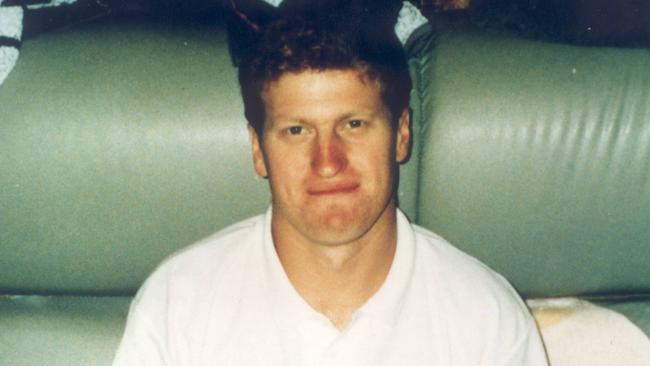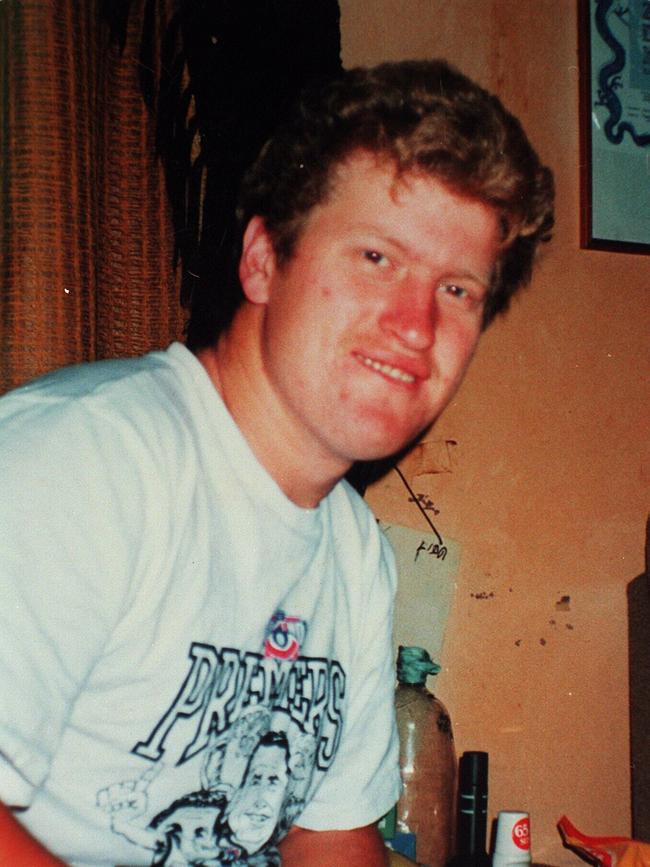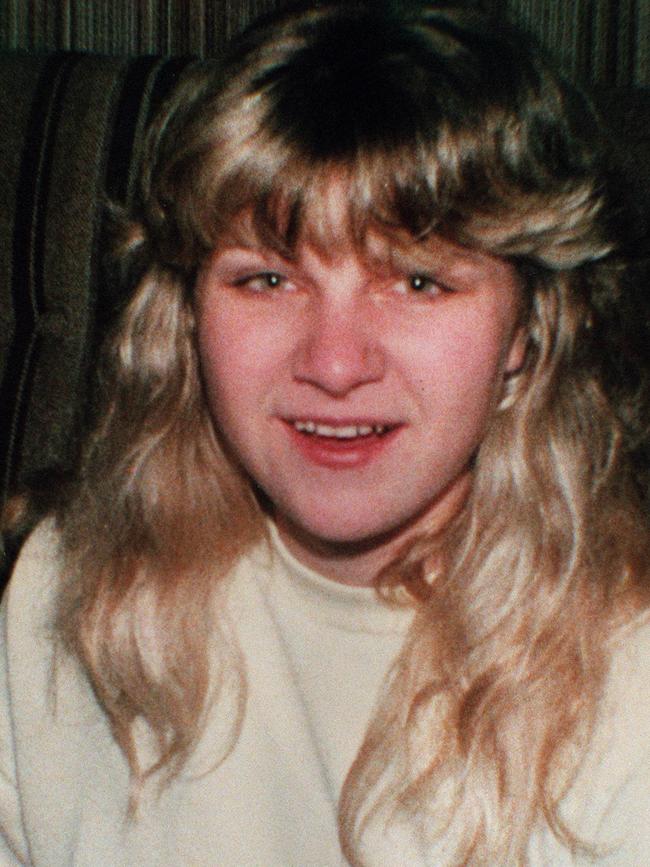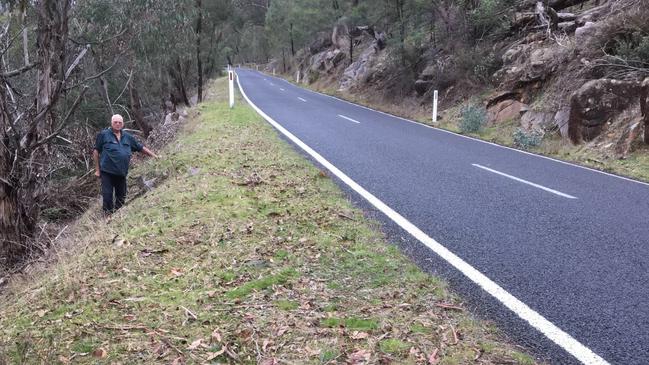Andrew Rule: How scrap of paper could help catch Fred Goggin’s killer
A number plate scrawled on a piece of paper and handed to a cop on a remote Victorian road is the missing puzzle piece in a 29-year-old murder mystery.

Police & Courts
Don't miss out on the headlines from Police & Courts. Followed categories will be added to My News.
Fred Goggin vanished on the last weekend of May, 1993. But it wasn’t until late June — 29 years ago this week — that police began seriously investigating what happened to the young man who went to a party at his girlfriend’s family house and was never seen again.
At 25, Goggin was a suburban footballer and a groundsman for Broadmeadows Council. He had just started two weeks leave, so police half suspected he’d taken an impromptu holiday without telling his family.
But his mother and sisters knew Fred wouldn’t do that and they feared for his safety well before he failed to front for work in mid-June.
They were used to seeing him every day, although he slept mostly at the house of his girlfriend’s family in Westmeadows.
The last time they saw Fred, they said later, he seemed under pressure and felt threatened.
After playing for Broadmeadows United in the Riddell District league, he’d dropped into his brother-in-law’s home in Glenroy before walking to his mother’s house nearby.
His sister Stella would tell a reporter, years later: “He pulled mum aside and told her that she could have his video recorder and TV. And then when he was leaving he kept kissing me and my sister. He’d never done that before. It was really strange.”
At 11.30pm, Mr Goggin arrived at the Westmeadows home where he stayed with his partner, Carmen Taylor, their toddler son, Sacha, and Carmen’s family, including her mother, stepfather, several siblings and their partners.


Police would later establish there were more than a dozen people there that night, including neighbours and friends as well as the extended Taylor family, which included Carmen’s stepfather Wayne and step-brother Adem.
Stella Goggin and her mother didn’t like their Fred living with the Taylors, people that Stella regarded as “feral”.
Goggin had dinner and a shower before going to the bedroom he shared with Carmen, who said later she showed him presents for their son, Sacha, whose second birthday was the following Monday.
The Taylors later said that Goggin left at 2.35am to walk the 4.5km to his mother’s house. But he never arrived.
The autumn break was late in the Wimmera in 1993, meaning a grain farmer like Keith Brennan was waiting for the rain that would soften the soil so he could work it to sow his crops.
It meant, for once in a farmer’s often rigid schedule, that Brennan and his wife Heather could take an afternoon off to drive to the Grampians on that Sunday afternoon, May 30.
The Brennans were a staid couple. They lived in Horsham and farmed the family land at St Helen’s Plains.
It was the first time they had left their teenage son and daughter home alone, so the small outing stuck in Heather’s mind. But there would be another reason to remember that day.
They had left straight after lunch and were driving into the Grampians through a district known as Zumsteins, a picturesque spot beside the Mackenzie River.
At one point, the road is flanked on one side by a steep drop into the river, covered in scrub and saplings, and on the other by a rocky outcrop. It is narrow and a bad place to stop a car but as the couple drove by they saw that someone had.
Brennan slowed his Commodore to look at who had stopped in such an awkward spot. They saw a small, bland, light-coloured sedan with no distinguishing features. But the man emerging from the saplings next to it grabbed their attention in a way that both Brennans describe vividly three decades later.

The man looked so angry and agitated that the couple were repelled. He glared at them in a way that made them look away. His body language was so troubling that Keith immediately looked at the car’s registration plate and recited it so Heather could write it down.
It was the era before mobile telephones were common. A decade later, the Brennans would have called the local police and reported that they’d seen someone acting suspiciously in a remote spot. The way things were, all they could do was drive on and hope to see a police car.
More than an hour later, near Halls Gap, they saw a marked police car on the Pomonal road.
They waved it down and did a U-turn near Tunnel Rd. The police car also did a U-turn, so they parked opposite each other. Keith Brennan took the scrap of paper with the registration number and crossed the road to explain himself.
The policeman was polite and attentive. He took the paper and radioed the police communications centre to check the registration. He said it came up as a rental car.
After a few minutes, they all went on their way — but the policeman took the paper with the registration number, something the Brennans would later come to regret. Neither could remember it.
The incident was brief but it troubled the couple, especially Keith. He couldn’t shake a bad feeling about the man they had seen.
Years before, in 1967, the then young Brennan was in Melbourne when a detective approached him near Russell St police station and asked him into the homicide office to join in a line up alongside a man just arrested for killing his wife with an axe.
Brennan and a few other volunteers lined up next to the accused man, who stood out starkly because he was so clearly filled with rage, hate and adrenaline. The young farmer was shaken by the axe killer’s frightening aura and never forgot it.
He never saw anyone else like that until a Sunday afternoon 16 years later on a quiet road in the Grampians.
Brennan often said to his wife and friends, “One day they’ll find a body up there.”
In 2004, someone did.
The hikers were students from Girton Grammar in Bendigo, bushwalking near Halls Gap as part of the school’s outdoor program on a September weekend.
For the girls, it was just another hike until they stumbled over what looked like human remains.
As soon as the news broke early the next day, Keith Brennan called Stawell police and was told to ring back later to speak to a detective, John Bongiorno.
He did. Bongiorno listened patiently to the farmer’s tale of sighting the eerily agitated man with the hire car in mid-1993. Brennan was sincere and believable but, unfortunately, had little hard information to add: the registration number of the reputed hire car had vanished with an unidentified policeman 11 years before.
The public might think the police force could easily trace its members’ movements but either it could not — or the hire car lead was dismissed out of hand.
Brennan, who would become a persistent caller, if not actually a nuisance, was initially told that the Halls Gap bones were probably much older than 1993. Perhaps this was a way to distract him while investigators moved with glacial care to find more remains in 2006, to examine them and fit them together into a partial skeleton.
It wasn’t until it was revealed that a sports shoe found with the body was manufactured in 1992 that Brennan grew sure that the bones were linked to his 1993 sighting of the unknown rental car driver.
In 2008, DNA tests finally identified the remains as those of Frederick Laurence Goggin, last seen in the early hours of May 30, 1993.
Brennan checked calendars, rainfall records, his past farming timetable and his wife’s memory of family events and independently confirmed that May 30 was the Sunday they’d seen the disturbed man with the car.
It seemed to Brennan that the police still could not trace the officer that he’d spoken to near Halls Gap. Or perhaps they did find the mystery policeman but he no longer had the car registration number, despite the fact such a detail should have been logged on his running sheet.

Brennan was asked not to bother police who were busy preparing a brief for the coroner to reopen an inquest into Fred Goggin’s death.
In 1997, Coroner Jacinta Heffey made an open finding about Goggin’s presumed death, with both the cause and place of death unknown.
But now Det. Dave Rae of the homicide squad had enough information to put to another coroner, Kim Parkinson. Notably the condition of Goggin’s skull, which had clearly been fractured by a brutal blow.
In February, 2010, Coroner Kim Parkinson re-opened the inquest and eventually found that while Fred Goggin’s death was “likely homicide”, she could not rule on who had killed him or where.
The police had posted a $100,000 reward for any information that would help secure a conviction. Detectives were confident the truth lay with the people who last saw Fred Goggin alive.
When the dead man’s sister Stella applied to a tribunal for an extension to a Crime Compensation claim in 2010, detective Dave Rae made the police stance crystal clear.
Finding in favour of Stella Goggin’s application, the tribunal chairman stated: “I … take into account the opinion of Detective Senior Constable Rae who has been in the Police Force for 31 years and in the Homicide squad for 17 years. He expressed the view with considerable force that, in his view, a crime had been committed and that the deceased was murdered.”
Nothing has changed in the 12 years since then.
Two men that police and the Goggin family consider prime suspects are still at large. But someone in their circle has 100,000 reasons to make a quiet call.
One candidate is the person who anonymously contacted Crime Stoppers in 1994 and provided detailed information about who killed Fred Goggin, how he was killed, and where.





